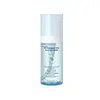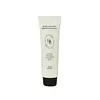What's inside
What's inside
 Key Ingredients
Key Ingredients

 Benefits
Benefits

 Concerns
Concerns

 Ingredients Side-by-side
Ingredients Side-by-side

Chamaecyparis Obtusa Water
MaskingWater
Skin ConditioningButylene Glycol
Humectant1,2-Hexanediol
Skin ConditioningDipropylene Glycol
HumectantSodium Hyaluronate
HumectantPotassium Hyaluronate
Skin ConditioningSodium Hyaluronate Crosspolymer
HumectantSodium Acetylated Hyaluronate
HumectantHydroxypropyltrimonium Hyaluronate
Hydrolyzed Hyaluronic Acid
HumectantHyaluronic Acid
HumectantDimethylsilanol Hyaluronate
HumectantPanthenol
Skin ConditioningBrassica Oleracea Capitata Leaf Extract
Skin ConditioningSalvia Sclarea Extract
AntiseborrhoeicLavandula Angustifolia Flower Extract
CleansingHyacinthus Orientalis Extract
Skin ConditioningChamomilla Recutita Flower Extract
MaskingCentaurea Cyanus Flower Extract
AstringentBorago Officinalis Extract
EmollientBetaine
HumectantBrassica Oleracea Italica Extract
AstringentBeta-Glucan
Skin ConditioningCurcuma Longa Root Extract
MaskingScutellaria Baicalensis Root Extract
AstringentTriticum Vulgare Sprout Extract
Skin ConditioningMedicago Sativa Extract
TonicRaphanus Sativus Seed Extract
Skin ConditioningBrassica Campestris Extract
Skin ConditioningMalachite Extract
AntioxidantEthylhexylglycerin
Skin ConditioningArginine
MaskingCarbomer
Emulsion StabilisingDisodium EDTA
Chamaecyparis Obtusa Water, Water, Butylene Glycol, 1,2-Hexanediol, Dipropylene Glycol, Sodium Hyaluronate, Potassium Hyaluronate, Sodium Hyaluronate Crosspolymer, Sodium Acetylated Hyaluronate, Hydroxypropyltrimonium Hyaluronate, Hydrolyzed Hyaluronic Acid, Hyaluronic Acid, Dimethylsilanol Hyaluronate, Panthenol, Brassica Oleracea Capitata Leaf Extract, Salvia Sclarea Extract, Lavandula Angustifolia Flower Extract, Hyacinthus Orientalis Extract, Chamomilla Recutita Flower Extract, Centaurea Cyanus Flower Extract, Borago Officinalis Extract, Betaine, Brassica Oleracea Italica Extract, Beta-Glucan, Curcuma Longa Root Extract, Scutellaria Baicalensis Root Extract, Triticum Vulgare Sprout Extract, Medicago Sativa Extract, Raphanus Sativus Seed Extract, Brassica Campestris Extract, Malachite Extract, Ethylhexylglycerin, Arginine, Carbomer, Disodium EDTA
Citrus Junos Fruit Water
MaskingVigna Radiata Seed Extract
Skin ConditioningWater
Skin ConditioningGlycine Soja Seed Extract
Skin ConditioningEthylhexyl Salicylate
UV AbsorberHomosalate
Skin ConditioningPropanediol
SolventNiacinamide
SmoothingButyloctyl Salicylate
Skin ConditioningBis-Ethylhexyloxyphenol Methoxyphenyl Triazine
Skin ConditioningPolymethylsilsesquioxane
Methylene Bis-Benzotriazolyl Tetramethylbutylphenol
UV FilterPolysilicone-15
UV FilterButylene Glycol
HumectantDiethylamino Hydroxybenzoyl Hexyl Benzoate
UV FilterSilica
AbrasiveCaprylyl Methicone
Skin ConditioningSchisandra Chinensis Fruit Extract
Skin ConditioningArtemisia Princeps Leaf Water
MaskingCamellia Sinensis Leaf Water
MaskingGlycine Soja Peptide
Skin ConditioningAvena Sativa Peptide
Skin ConditioningGlycine Max Polypeptide
Skin ConditioningTriticum Aestivum Peptide
Skin ConditioningLactobacillus Ferment
Skin ConditioningLactococcus Ferment
Skin ConditioningAdenosine
Skin ConditioningMelia Azadirachta Flower Extract
Skin ConditioningRehmannia Glutinosa Root Extract
Skin ConditioningMelia Azadirachta Leaf Extract
Skin ConditioningCornus Officinalis Fruit Extract
Skin ConditioningCurcuma Longa Root Extract
MaskingAlisma Orientale Tuber Extract
Skin ConditioningOcimum Sanctum Leaf Extract
Skin ConditioningDioscorea Japonica Root Extract
Skin ConditioningPaeonia Suffruticosa Root Extract
Skin ProtectingSmilax Glabra Root Extract
Skin ConditioningCorallina Officinalis Extract
Skin ConditioningArtemisia Annua Extract
MaskingLepidium Meyenii Root Extract
Skin ConditioningOryza Sativa Extract
AbsorbentStellaria Media Extract
Skin ConditioningAvena Sativa Meal Extract
SoothingHydrolyzed Vegetable Protein
Skin ConditioningGlycoproteins
Skin ConditioningMaltodextrin
AbsorbentTromethamine
BufferingDecyl Glucoside
CleansingCarbomer
Emulsion Stabilising1,2-Hexanediol
Skin ConditioningXanthan Gum
EmulsifyingSodium Stearoyl Glutamate
CleansingDibutyl Adipate
EmollientPentylene Glycol
Skin ConditioningPolyacrylate Crosspolymer-6
Emulsion StabilisingPoly C10-30 Alkyl Acrylate
Emulsion StabilisingBehenyl Alcohol
EmollientVp/Eicosene Copolymer
Polyglyceryl-3 Methylglucose Distearate
EmulsifyingAcrylates/C10-30 Alkyl Acrylate Crosspolymer
Emulsion StabilisingEthylhexylglycerin
Skin ConditioningPropylene Glycol
HumectantCitrus Junos Fruit Water, Vigna Radiata Seed Extract, Water, Glycine Soja Seed Extract, Ethylhexyl Salicylate, Homosalate, Propanediol, Niacinamide, Butyloctyl Salicylate, Bis-Ethylhexyloxyphenol Methoxyphenyl Triazine, Polymethylsilsesquioxane, Methylene Bis-Benzotriazolyl Tetramethylbutylphenol, Polysilicone-15, Butylene Glycol, Diethylamino Hydroxybenzoyl Hexyl Benzoate, Silica, Caprylyl Methicone, Schisandra Chinensis Fruit Extract, Artemisia Princeps Leaf Water, Camellia Sinensis Leaf Water, Glycine Soja Peptide, Avena Sativa Peptide, Glycine Max Polypeptide, Triticum Aestivum Peptide, Lactobacillus Ferment, Lactococcus Ferment, Adenosine, Melia Azadirachta Flower Extract, Rehmannia Glutinosa Root Extract, Melia Azadirachta Leaf Extract, Cornus Officinalis Fruit Extract, Curcuma Longa Root Extract, Alisma Orientale Tuber Extract, Ocimum Sanctum Leaf Extract, Dioscorea Japonica Root Extract, Paeonia Suffruticosa Root Extract, Smilax Glabra Root Extract, Corallina Officinalis Extract, Artemisia Annua Extract, Lepidium Meyenii Root Extract, Oryza Sativa Extract, Stellaria Media Extract, Avena Sativa Meal Extract, Hydrolyzed Vegetable Protein, Glycoproteins, Maltodextrin, Tromethamine, Decyl Glucoside, Carbomer, 1,2-Hexanediol, Xanthan Gum, Sodium Stearoyl Glutamate, Dibutyl Adipate, Pentylene Glycol, Polyacrylate Crosspolymer-6, Poly C10-30 Alkyl Acrylate, Behenyl Alcohol, Vp/Eicosene Copolymer, Polyglyceryl-3 Methylglucose Distearate, Acrylates/C10-30 Alkyl Acrylate Crosspolymer, Ethylhexylglycerin, Propylene Glycol
 Reviews
Reviews

Ingredients Explained
These ingredients are found in both products.
Ingredients higher up in an ingredient list are typically present in a larger amount.
1,2-Hexanediol is a synthetic liquid and another multi-functional powerhouse.
It is a:
- Humectant, drawing moisture into the skin
- Emollient, helping to soften skin
- Solvent, dispersing and stabilizing formulas
- Preservative booster, enhancing the antimicrobial activity of other preservatives
Butylene Glycol (or BG) is used within cosmetic products for a few different reasons:
Overall, Butylene Glycol is a safe and well-rounded ingredient that works well with other ingredients.
Though this ingredient works well with most skin types, some people with sensitive skin may experience a reaction such as allergic rashes, closed comedones, or itchiness.
Learn more about Butylene GlycolCarbomer is a polymer of acrylic acid. Its main role is to create a gel consistency.
A high amount of carbomer can cause pilling or balling up of products. Don't worry, most products contain 1% or less of carbomer.
Curcuma Longa Root Extract is from the spice, turmeric. Besides being a healthy and delicious spice, turmeric also has plenty of skincare benefits. It has anti-inflammatory, antioxidant, and anti-microbial properties.
Turmeric contains curcumin, an antioxidant. Antioxidants help neutralize unstable free-radical molecules. Free-radical molecules may damage your skin's cells and DNA. Curcumin may help with anti-aging.
Curcumin also has anti-inflammatory properties and can help soothe skin and reduce irritation. On top of that, curcumin has been shown to help prevent hyperpigmentation from sun damage.
The anti-microbial property of turmeric can make it effective in treating acne. This property has also been shown to help regulate the production of sebum.
Learn more about Curcuma Longa Root ExtractEthylhexylglycerin (we can't pronounce this either) is commonly used as a preservative and skin softener. It is derived from glyceryl.
You might see Ethylhexylglycerin often paired with other preservatives such as phenoxyethanol. Ethylhexylglycerin has been found to increase the effectiveness of these other preservatives.
Water. It's the most common cosmetic ingredient of all. You'll usually see it at the top of ingredient lists, meaning that it makes up the largest part of the product.
So why is it so popular? Water most often acts as a solvent - this means that it helps dissolve other ingredients into the formulation.
You'll also recognize water as that liquid we all need to stay alive. If you see this, drink a glass of water. Stay hydrated!
Learn more about Water